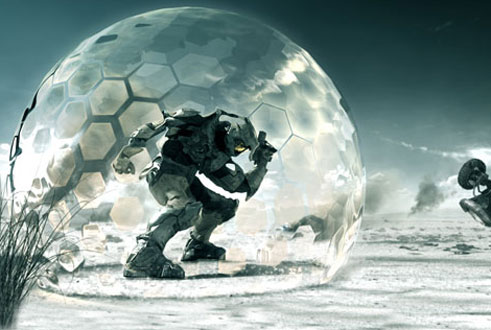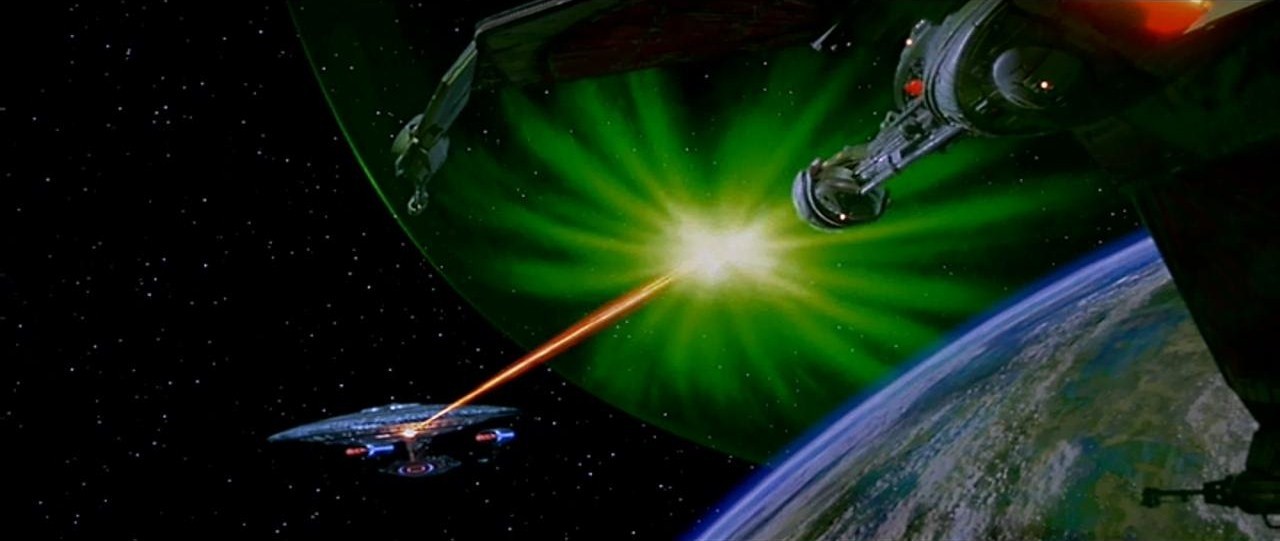Greetings!
Welcome to Scifi-Meshes.com! Click one of these buttons to join in on the fun.
Quick Links
Using Constraints on Materials in 3DS Max?
 Toa_Kaita332
Posts: 0Member
Toa_Kaita332
Posts: 0Member
Hey guys, whats up?
Im currently working on some new Trek stuff, and Ive always wanted to use that "Hex" style shield used in various sci fi (Halo 3 Bubble Shield for instance). I want to try to mix the effect so that it looks like a mix of the TNG shield effect combined with the Hex shield effect, with the hex grid being visible upon impact.


I have the material down no problem, as seen here (to create it I rendered a hex grid as a Diffuse Material and a Bump Material and used a Gradient Ramp as an Opacity Map):

Now, Ive been looking at a tutorial off-site on how to do shields by having the center of a material "look at" a Null/Dummy Object in Lightwave. Heres an excerpt using Lightwave's Surface/Material editor:
Is there any possible way to do something similar to this with Constraints or Expressions and a Dummy Object in 3ds Max? Ive never experimented with Constraints or expressions in Max before, and Im having a rather difficult time. Ive tried using a look at constraint, but it moves the whole shield sphere (which, like most other Trek Shield Spheres is elongated instead of a perfect sphere) instead of just the gradient ramp material, which represents the impact. As shown in the Lightwave Tutorial, Id like the "Impact" Material to be looking at my Null/Dummy Object.
Thanks in advance,
Toa
Im currently working on some new Trek stuff, and Ive always wanted to use that "Hex" style shield used in various sci fi (Halo 3 Bubble Shield for instance). I want to try to mix the effect so that it looks like a mix of the TNG shield effect combined with the Hex shield effect, with the hex grid being visible upon impact.


I have the material down no problem, as seen here (to create it I rendered a hex grid as a Diffuse Material and a Bump Material and used a Gradient Ramp as an Opacity Map):

Now, Ive been looking at a tutorial off-site on how to do shields by having the center of a material "look at" a Null/Dummy Object in Lightwave. Heres an excerpt using Lightwave's Surface/Material editor:
Set Input Parameter to Distance to Object, and set the Object input to Shield Impact, or whatever you've named the null.
Is there any possible way to do something similar to this with Constraints or Expressions and a Dummy Object in 3ds Max? Ive never experimented with Constraints or expressions in Max before, and Im having a rather difficult time. Ive tried using a look at constraint, but it moves the whole shield sphere (which, like most other Trek Shield Spheres is elongated instead of a perfect sphere) instead of just the gradient ramp material, which represents the impact. As shown in the Lightwave Tutorial, Id like the "Impact" Material to be looking at my Null/Dummy Object.
Thanks in advance,
Toa
Post edited by Toa_Kaita on
Additional credits
- Icons from Font-Awesome
- Additional icons by Mickael Bonfill
- Banner background from Toptal Subtle Patterns
© Scifi-Meshes.com 2001-2024
Posts
You could apply a planar UV map to your shield object, and then use parameter wiring to bind the rotation of the UV map to look at your target object.
Alternatively, you can use a falloff map, I think it has "distance to object" settings as well. Both of these methods will only work for 1 shield hit at a time though.
i'd start with a geosphere, then backspace some vertexes to make the mesh hexagons. i'd kill the smoothing groups.
i would then use a vray edge texture as bump in the material to bring up the edges.
the transparency can be controled with a falloff in distance mode. (the target would be a dummy object you'd animate with the incoming fire.)
the overall look is up to you, but i like the halo bubble shield better. i see it as a simple material with refraction. (vray mat with near white refraction little glossy), and maybe a fresnel reflection.
edit : i suppose you can adapt this way to the standard/mental ray way.
Current Projects:
Ambassador Class
this is how you'd set it up:
Heres a test shot I did (no ships were harmed in the making of this) :